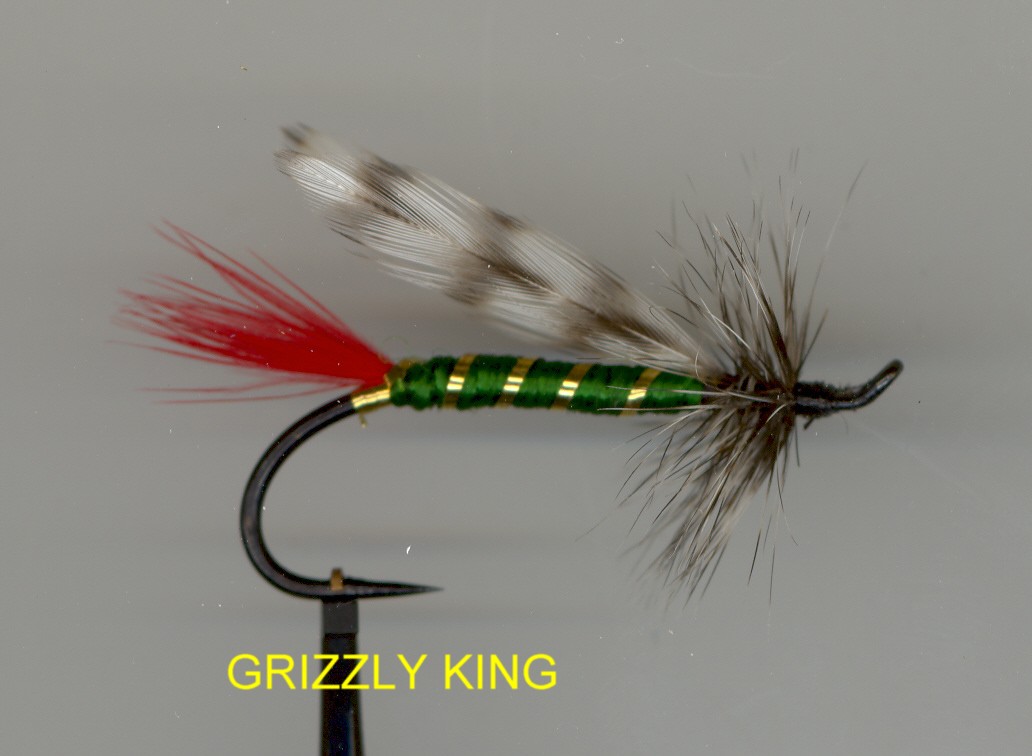On The Fly
"Fly tying is a school from which we never graduate"
 TYING NEWS
TYING NEWS
The Rogue Flyfishers will be sponsoring fly tying classes again this year.
Classes will start Tuesday, February 1st and run for six weeks each Tuesday
evening from 7 to 9 p.m. at the Medford Library. Johnny Hale will teach the
beginners and I will be teaching the intermediate class. We can take up to
twelve students in each class so reserve your spot early. Sign-up sheets will
be circulated at the next two RFF meetings or you can call Johnny or myself to
hold your spot. Materials will be provided so students need only bring a vise,
tools, and thread. Some of our beginners have lots of desire to learn but not
the tools to get started. If any RFF member has extra tools or materials to
donate or loan to this very worthy cause, we would appreciate it. Like rods
and reels, your donation will be used over and over in the future classes to
spark the new generation's passion for the art. The future of our club depends
on beginners and young people to carry on this passion. Please help if you can.
On a personal note, I'm sure you have noticed that Dick Bonamarte and myself do tying demos before the meeting each month. We also try to donate a set of flies for the raffle. We do it because we want to and because it's great fun. But the last RFF meeting was especially rewarding for us. A new member brought his young son to the meeting. As he intently watched me tie a freight train steelhead fly I could tell this kid was special. He really wanted to be there, absorbing every detail, anxious to learn all. Dick and I both gave him the fly he watched being tied and to top it off, the lucky young man won a landing net and our donated flies in the raffle. You should have seen the look on his face. It was all the payback we needed for our efforts. I would hope that more members bring their sons and daughters, grandchildren, nieces and nephews to future meetings. Encourage the young to take fishing and tying courses offered by the club. The next meeting of the Southern Oregon Fly Tiers will be held on January 27th at the Rogue River Library. Final preparations for our library displays will be gathered. We will have demos, a guest tier, a fly exchange, and lots of fun for all. Please accept our invitation to attend on the forth Thursday of each month.
 PATTERN OF THE MONTH - Grizzly King
PATTERN OF THE MONTH - Grizzly King
Hook: Size 10 - 6 steelhead/salmon
Thread: Black 6/0
Tail: Red hackle fibers
Body: Olive or green floss
Rib: Flat gold tinsel
Wing: Two grizzly hackle tips, flared.
Hackle: Grizzly in front of wing.
Tying Instructions:
1.Wind thread base to rear of hook at hook point and tie in flat gold tinsel.
2. Wind tinsel back to barb, then forward to hook point and tie off.
3. Tie in red hackle barbs and post them up at a 30-degree angle. Tie in
flat gold tinsel then green floss.
4. Wind the floss forward, back, then forward again to form a smooth
tapered body. Tie off and trim.
5. Wind tinsel forward in evenly spaced turns. Tie off and trim.
6. Tie in a pair of grizzly hackle tips, flared with concave sides facing out.
7. Tie in a webby grizzly hackle in front of the wings and wind a full collar.
Tie off and trim.
8. Build a tapered head, whip finish, and cement.
There are many successful patterns that spawn variation upon variation as anglers refine their flies to suit their specific fishing needs. The Grizzly King began as a Brookie fly. Then it was enlarged for Atlantic Salmon and ultimately found it's way to the West in the pursuit of steelhead. In this version of the Grizzly King the wing is a pair of flared hackle tips. This is a common streamer style used in steelhead flies because the hackle tips are unlikely to tangle in the hook bend. The body is dressed with floss, which, in combination with the simple wings produce a fly that will sink rapidly. Another similar pattern, very popular in our area, is the Silver Hilton.
Tying Tips - Get a Grip
If you use a conventional style hackle pliers with metal jaws and want to
stop slippage, here's a suggestion that accomplishes this, and reduces breakage.
Get some very fine emery cloth and simply glue two small slightly oversized
pieces to the inside gripping surfaces of the pliers. The clamping force will
hold these pieces in place until dry. Then take a double-edge razor blade and
carefully trim off the excess. The fine abrasive surface greatly improves
holding power, while the soft cloth edges prevent hackle stems from being
accidentally cut. The emery can easily be replaced when necessary.
Tie One On,
Dan Kellogg (you can contact me at FLYGUY@EZNORTHWEST.COM)